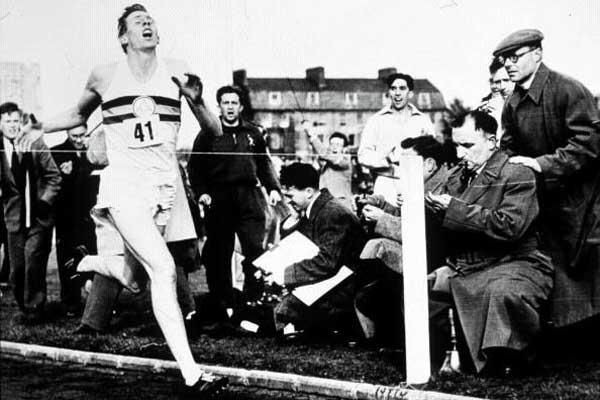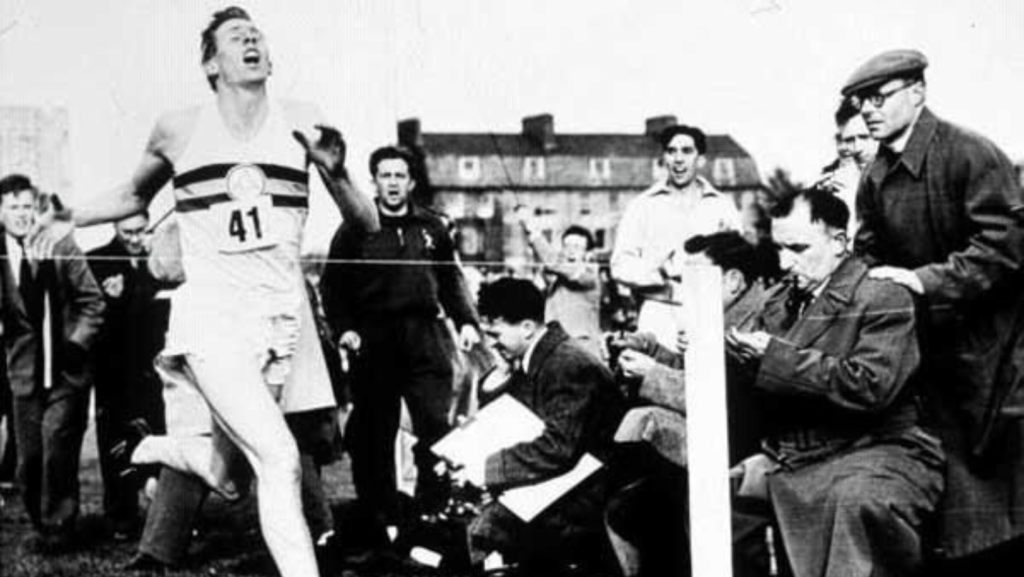
A glowing smile will light up the faces of old-timers, them with receding gray hair and wrinkles on their faces, when you mention The Mile in the athletics context. Monday was the 70th anniversary of Roger Bannister being the first to run a sub-four-minute mile. Quite fittingly, the theme for this year’s World Athletics Day is ‘World Mile Challenge’.
The distance was considered the blue riband of athletics but only after Britain’s Bannister, Australia’s John Landy and American Wes Santee sought to be the first to run the distance inside four minutes in the mid-1950s. They were competing on different tracks in diverse parts of the world but were united by the chase for what was to become the Holy Grail of track sport.
On May 6, 1954, Bannister attained immortality in Oxford. He was, of course, assisted by Chris Brasher, later sports editor of The Observer newspaper, and Chris Chataway to achieve his objective. It was a wet and blustery afternoon, but the wind dropped when the runners lined up at the start that evening. The bespectacled Brasher set the pace with two laps of 57.7 seconds and 60.6 seconds respectively.
When Brasher’s energy flagged, Chataway took over the role of pacemaker for Bannister, completing the third lap in 3:00.7. Bannister, known for his sprint-finish skills, wound himself up for a supreme effort, overtook Chataway on the last bend and strode to the tape. He was exhausted and had to wait for the time to be revealed.
Historical accounts reveal that the announcer Norris McWhirter had reeled off a list of records that Bannister had broken, climaxing with the world record. There was hushed silence until he said: “The time is three….” The rest of the announcement was lost as the 1200-strong crowd went wild.
The marketing wizards of the time had lined up the Mile of the Century in the Commonwealth Games in Vancouver just 46 days later, with Bannister and Landy squaring off. Landy took a 15-yard lead after two laps but Bannister kept chipping away and slipped past the Australian on the final bend to win the great race. Both men had dipped in inside four minutes.
A number of track legends and stars like Kip Keino (Kenya), Eliud Kipchoge (Kenya), Filbert Bayi (Tanzania) David Moorcroft (Britain), John Walker (New Zealand), Steve Scott (USA), Sebastian Coe, Steve Ovett and Steve Cram (Britain), Said Aoutia (Morocco), Noureddine Morcelli (Algeria) have had memorable miles.
Yet, it has been nearly 25 years since Moroccan legend Hichal El Guerrouj established the world record, finishing a race in 3:43.14 in Rome. Norway’s Jakob Ingebrigtsen and American Yared Nuguse went within sniffing distance of the world record, clocking 3:43.73 and 3:43.97 respectively in the Prefontaine Classic on September 16, 2023.
What of India and Indians?
The earliest record of a Mile being run in India dates back to 1924 when the National Championships were held in Delhi. MV Venkataramanswamy of Madras beat Punjab’s Dalip Chand and Lal Shah with a time of 4:46.4. He improved the record to 4:39.7 in Calcutta in 1927 before R Judge (United Provinces) lowered it to 4:31.2.
From the 1936 National Championships in Lahore, India embraced the metric system and has not been known to host Mile races. Even at the peak of the world’s romance with the distance, Indians were perhaps not enticed to attempt the imperial mile.
With the Commonwealth Games also switching to metric distance from 1970, Indians did not really warm up to the mile. Even when Parvej Khan clocked 3:55.41 over the mile in Boston on February 16 this year to become the only Indian listed with a sub 4-minute mile on the World Athletics website, few took note of the milestone.
It is tough confirming it, but it is probable that Sajeesh Joseph, whose fourth-place finish in the 2014 Incheon Asian Games 800m was the highlight of his career spanning 14 years from 2006, probably held the National Record for the mile until Parvej Khan’s sub-4 minute mile. Joseph clocked 4:10.34 in a meet in Port Elizabeth, South Africa, on February 19, 2010.
Then again, World Athletics Day marks the formation of World Athletics – International Association of Athletics Federations or International Amateur Athletics Federation as it was called in its earlier avatars. If it can arouse the athlete inside each of India’s young population, it will have served its purpose. It is about going the extra mile, isn’t it?




